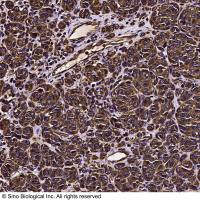High-Affinity Binding of Antidepressants to Platelets and Brain Tissues
互联网
互联网
相关产品推荐

Mannan Binding Lectin/MBL2 兔多克隆抗体
¥1699

RASSF5/RASSF5蛋白Recombinant Human Ras association domain-containing protein 5 (RASSF5)重组蛋白New ras effector 1 Regulator for cell adhesion and polarization enriched in lymphoid tissues蛋白
¥1836

ⅡA组磷脂酶A2(PLA2G2A)检测试剂盒PLA2; MOM1; PLA2B; PLA2L; PLA2S; PLAS1; sPLA2(platelets,synovial fluid); Non-pancreatic secretory phospholipase A2; Phosphatidylcholine 2-acylhydrolase 2A
¥800

Vimentin Antibody, Rabbit PAb, Antigen Affinity Purified | Vimentin 兔多抗 (抗原亲和纯化)
¥1699

SLC31A1/SLC31A1蛋白/Copper transporter 1 Short name: hCTR1 Solute carrier family 31 member 1蛋白/Recombinant Human High affinity copper uptake protein 1 (SLC31A1) (Active)重组蛋白
¥69
相关问答

